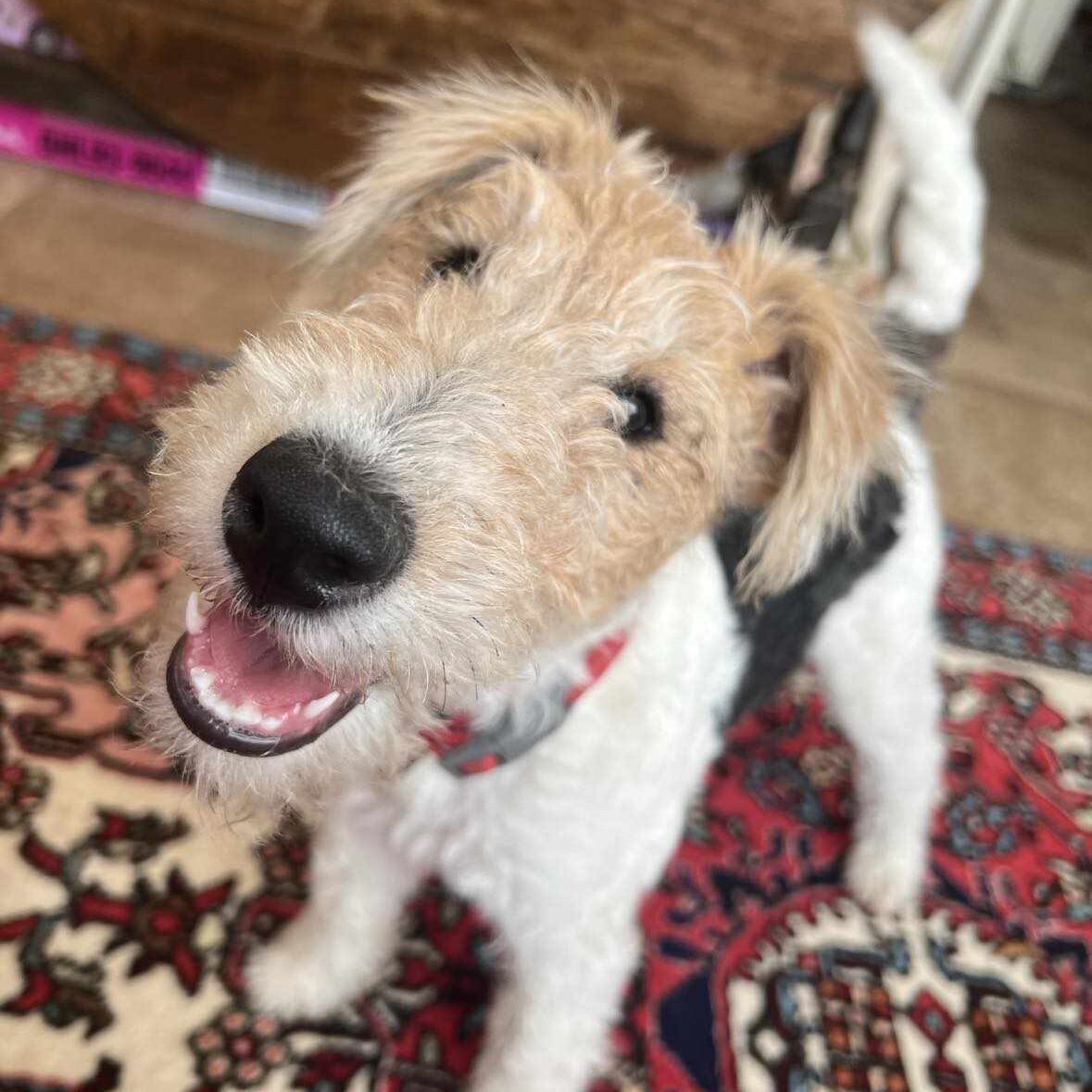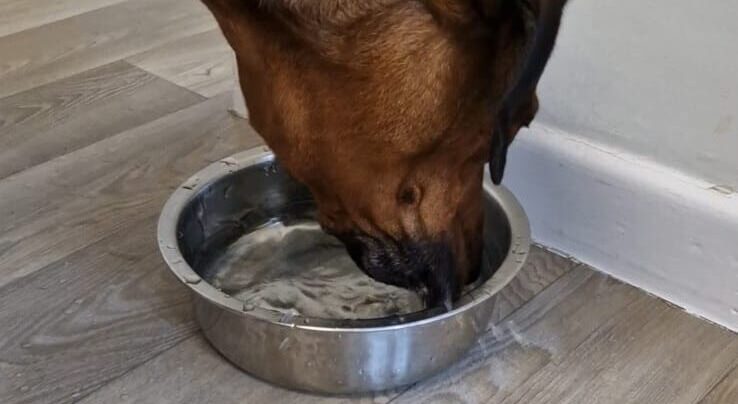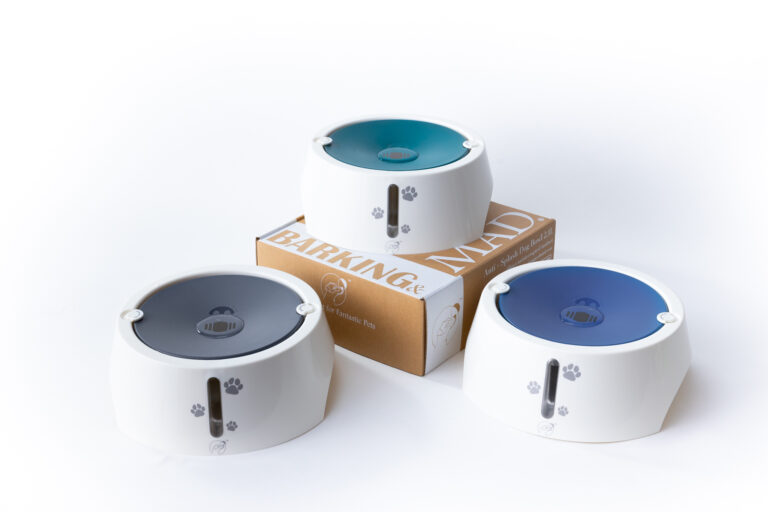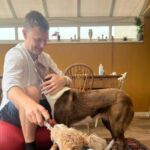Step by Step Puppy Training – New puppy owners guide
Whether you’re a first time puppy owner or adding to the pack, this will help you navigate puppyhood house training with ease.
Bringing a new puppy into your home is like bringing a new family member home. The excitement is real but so is the anticipation and responsibility. You need to set up your space so the transition is as smooth as possible for very young puppies.

Preparing Your Home for a New Puppy
Before your new puppy arrives you need to puppy proof your home. Think of it as baby proofing but for training a puppy instead. Young puppies are curious and will explore every nook and cranny. Here are the steps to get your home ready:
Puppy Proofing Basics
Puppy proofing your home for a small puppy involves several key steps. First secure any loose wires. Puppies love to chew and wires are temptation. Use cord protectors or hide wires behind furniture in one corner to prevent accidents.
Next remove any harmful plants. Some houseplants are toxic to dogs so ensure all plants within your puppy’s reach are safe or move them to a higher spot.
Store chemicals safely. Cleaning supplies, medications and other chemicals should be stored in cabinets out of reach. Finally block small spaces where your puppy might get stuck. Many puppies can get into surprisingly small spaces so make sure to block off any gaps.
One of the best ways to puppy proof is to think like a puppy. Get down on your hands and knees and see the world from their perspective. Look for hazards you might not see from a standing position.
(I love the idea of getting people to do this but it does make sense!)
Electrical outlets, small objects that can be swallowed and low hanging tablecloths are all risks to a curious puppy. Remove or secure these items so your home is safe.
Creating a Safe Space
A safe and controlled environment is key to your puppy’s wellbeing. A puppy’s crate / puppy playpen or exercise pen is perfect for this. It gives your puppy space to move around but keeps them contained.
When choosing the right puppy playpen look for a sturdy pen with high walls your puppy can’t climb over. It should be big enough for a bed, toys and a pee pad area.
The location of the puppy’s playpen is important. Place the play pen in a room you spend a lot of time in so your puppy feels part of the family. The kitchen or living room works well. Finally include a dog’s bed, plush toys, a water bowl and chew toys in the pen. This will keep your puppy comfortable and entertained.
Potty Area
Designate a specific area in your home for potty breaks. Consistency is key to potty train. Choose a designated potty area that’s easy to get to and not in high traffic areas to get your puppy potty trained.
Use a leash to guide your puppy to the spot each time. If using pee pads or a litter box place them in the same spot each time.
Gradually move them closer to the door and then to outdoor potty training. The more consistent you are with your puppy’s potty routine the faster they will learn.
I remember when my mum brought home my first puppy Snippet. One day I found Snippet chewing on a charging cable under the desk. That’s when pen training came into play. Puppy playpens can save a lot of hassle. We decided to puppy proof every corner of the house, making sure all wires were out of reach and no small objects were on the floor. It took a bit of work and we made sure to complete puppy playpen training first before opening the crate door.
Crate Training
Crate trained is great to give your puppy a understanding of your house. Think of the crate as your puppy’s den—a place they can retreat and feel safe.
Choosing the Right Crate and playpen
When choosing both a crate and playpen size matters. The crate extends to be big enough for your puppy to stand, turn around and lie down comfortably.
Many crates come with dividers so you can adjust the space as your puppy grows, this helps keep things puppy proofed.
Comfort is key. Add a dog bed or blankets to make the crate cozy and not just a enclosed space. A stuffed Kong or interactive toys will keep your puppy occupied.
There are different types of larger crate, wire crates, plastic crates and soft sided crates. Wire crates provide good ventilation and visibility which can be comforting for some puppies in the same room as you.
Plastic crates are more enclosed and some dogs prefer that den like feel with the door closed. Soft sided crates are portable and great for travel but may not be durable enough for a teething puppy. Choose a crate that suits your needs and your puppy’s temperament.
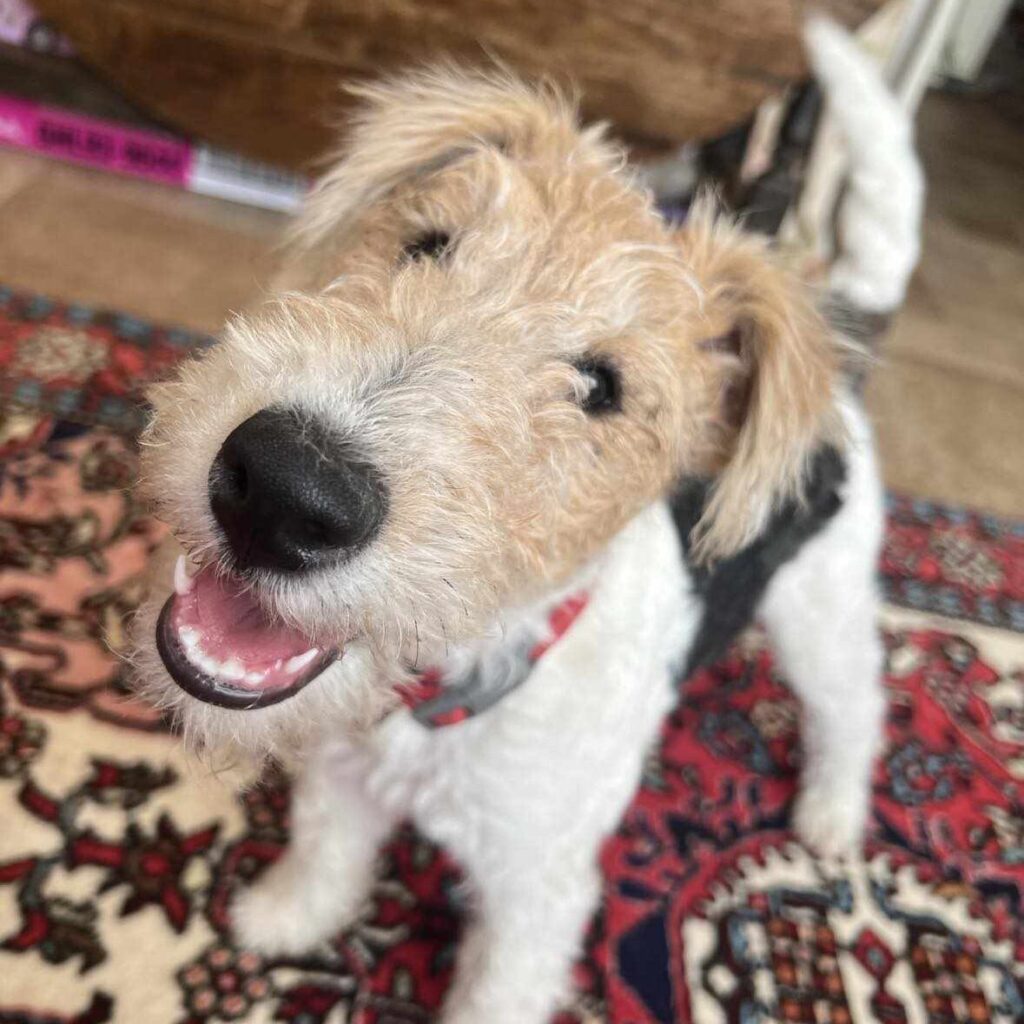
Introducing the Crate
When introducing your puppy to the crate it’s important to create positive associations. Encourage your puppy to explore the crate by placing treats and toys inside.
Let them enter and exit freely without forcing them. Start with short crate sessions, increase the time as your puppy becomes more comfortable. Always reward calm behavior with praise and treats. Use the crate for naps and overnight sleeping to help establish the crate as a place of rest and safety.
To make the crate more cozy you can use a soft blanket or crate pad, also make sure there is enough space. Adding a toy or two can also help but make sure they are puppy safe and age and size appropriate for your puppy. Don’t leave soft toys or bedding in the crate with a puppy who will chew and swallow pieces.
Crate Training Challenges
Crate training can be tough but with patience and consistency your puppy will learn to love their crate. If your puppy whines or cries in the crate don’t let them out immediately. Wait until they are quiet then reward with praise and a treat.
Gradually increase the time your puppy is in the crate when you’re not in sight. Leave an article of clothing with your scent to comfort and reduce anxiety. The crate inside should have enough room to be comfortable, the key is that the puppy learns the crate is a safe space.
Don’t make a big fuss when you leave or come home. Instead give your puppy a treat or toy to keep them occupied as you quietly leave.
Separation anxiety
Some puppies can get separation anxiety when left alone in the crate. To help with this try to make your departures and arrivals low key so you don’t create anxiety around these times.
Potty Training
Potty training is one of the most important parts of puppy training. Consistency and patience is key to good potty habits.
Establish a Routine
A routine helps your puppy understand when and where to go potty. Take your puppy outside frequently – after meals, naps and play sessions.
Puppies have small bladders and need to go often. Choose a specific spot in your yard where you want your puppy to go. The familiar scent will help them know it’s the right place.
Praise and reward your puppy with a treat immediately when they go potty in the designated area. Positive reinforcement works wonders.
Frequent potty breaks are crucial in the early days. Puppies can hold their bladder for one hour for every month of age.
For example a 3 month old puppy can hold it for about 3 hours. However every puppy is different and some may need more frequent breaks.
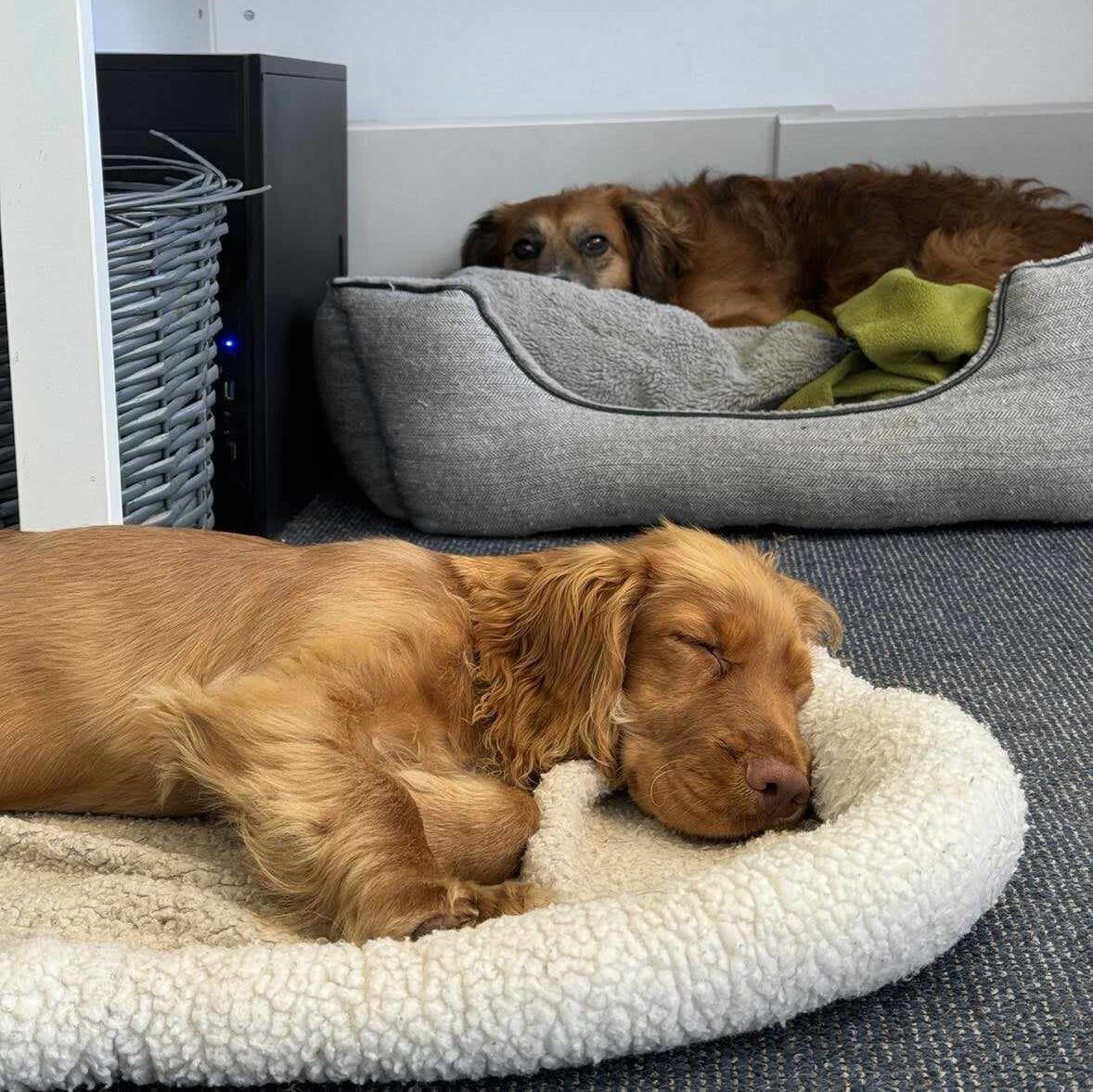
Handling Potty Accidents
Accidents will happen during the potty training process. How you handle them can affect your puppy’s progress. If your puppy has an accident stay calm.
Clean up the mess, remove any lingering scent that might attract your puppy to the same spot. Don’t punish your puppy for accidents.
Punishment can create fear and anxiety which can hinder the potty training process. Focus on reinforcing great potty habits by rewarding your puppy for going in the right place.
enzymatic cleaner
To clean up accidents use an enzymatic cleaner designed for pet stains. These cleaners break down the organic matter in urine and feces and eliminate the odors that will attract your puppy back to the same spot.
Regular household cleaners may not remove the scent completely so it’s worth investing in a good pet specific cleaner.
Using Pee Pads and Litter Boxes
Pee pads can be useful during the potty training process. Place pee pads in a consistent location in the puppy pen and encourage your puppy to use them.
Move the pads closer to the door and then outside to transition to outdoor potty training. Some puppies especially small breeds can be trained to use a litter tray. This can be especially useful in apartments or during inclement weather.
When using pee pads consistency is key. Place the pad in an area that’s easy for your puppy to access but not in a high traffic area.
Encourage your puppy to use the pad by placing them on it frequently especially after meals and naps. Gradually move the pad closer to the door and then outside to transition your puppy to outdoor potty breaks.
I remember potty training Snippet. Since we lived in a farm cottage we started with pee pads. It took a lot of patience and consistency but he eventually got the hang of it. We celebrated each success with treats and lots of praise.
Over time we were able to transition him to going outside. thankfully it wasn’t to hard on a farm, lots to explore!
The key was to be consistent and patient and to always reinforce the behavior we wanted.
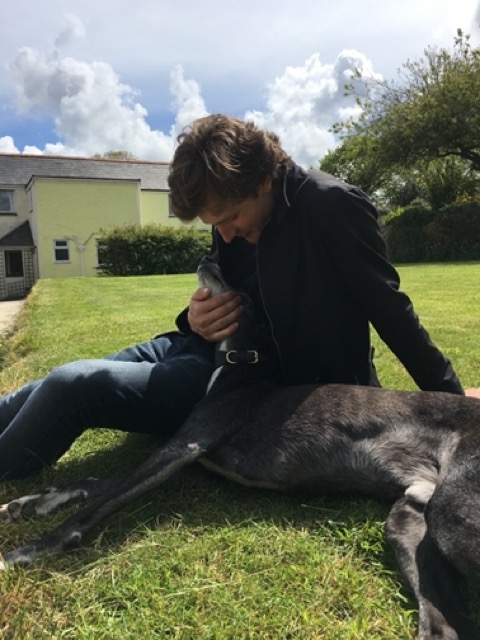
Creating a Comfortable Sleeping Area
Your puppy needs a comfortable and safe place to sleep. Setting up a dedicated sleeping area like a crate helps establish a routine and gives your puppy a sense of security.
Choosing a Dog Bed
Choose a bed that is soft and supportive. Orthopedic beds are great for growing puppies. Choose a bed with a removable, washable cover for easy cleaning.
The bed should be big enough for your puppy to stretch out in. Consider the shape of the bed too; some puppies prefer round beds while others like rectangular ones. Look for beds made from durable, washable materials as puppies can be messy.
When choosing a bed consider your puppy’s size and sleeping habits. Some dogs like to curl up in a ball while others like to stretch out.
Durable materials
If your puppy tends to chew on things choose a bed made from durable materials that can withstand some rough handling. If your puppy has orthopedic issues or is a large breed prone to joint problems consider an orthopedic bed with extra support.
Establishing a Sleep Routine
A sleep routine is a training session in its self. Put your puppy to bed at the same time every night. A consistent routine helps your puppy adjust and understand when it’s time to sleep.
For the first few nights place the crate or bed in your bedroom. Your presence will provide reassurance and help with separation anxiety. Young puppies may need to go potty during the night. Set an alarm to take your puppy out for a toilet break to prevent accidents.
Having a bedtime routine helps signal to your puppy that it’s time to wind down. This might include a final toilet break, a few minutes of quiet play and some gentle petting or brushing.
Avoid stimulating activities before bed as this can make it harder for your puppy to settle down in the crate.
Snippet was a ball of energy during the day but come bedtime he had a hard time settling down. We started a bedtime routine that included a short walk, some quiet play and a gentle brushing.
It took a few days but soon he started to understand that these activities meant it was time for bed. It made our nights much more peaceful and helped him feel secure.
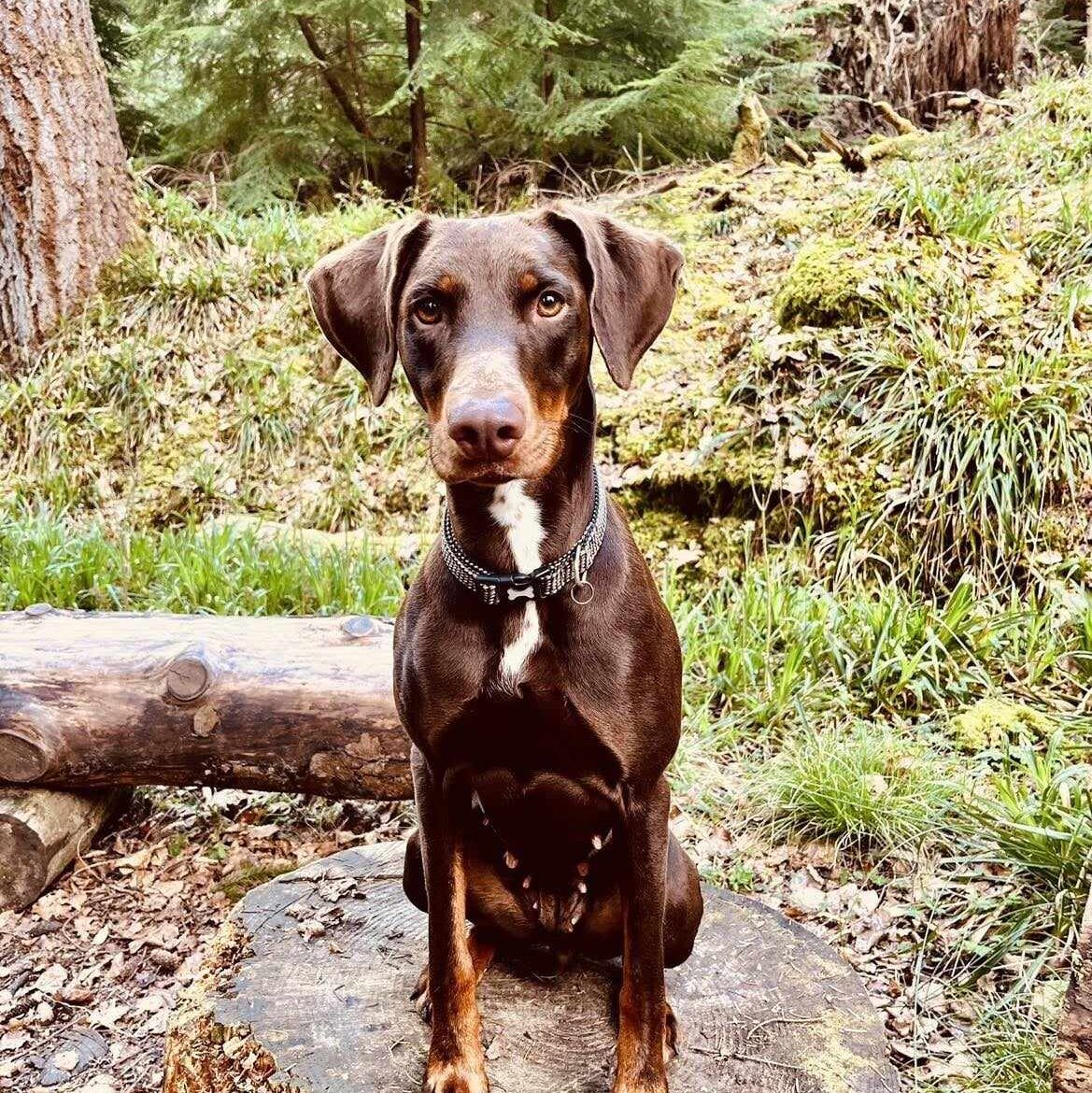
Training Your Puppy
Training session ‘s are an ongoing process that helps your puppy learn good manners and understand what’s expected of them. We found the training continues for most of a dog’s life!
Basic Commands
Start with basic commands like sit, stay and come. Use positive reinforcement – reward good behaviour with treats and praise. Keep training sessions short and fun.
Like me, puppies have short attention spans so 5-10 minutes is ideal. Consistency is key – use the same commands and rewards every time.
Sit: Hold a treat close to your puppy’s nose, then move your hand up, allowing their head to follow the treat and their bottom to lower. Once they’re in the sitting position say “Sit”, give them the treat and affection.
Stay: First have your puppy sit. Then open your palm in front of you and say “Stay”. Take a few steps back. Reward with a treat and affection if they stay. Gradually increase the number of steps you take before giving the treat.
Come: Put a leash and collar on your puppy. Go down to their level and say “Come” while gently pulling on the leash. When they get to you reward with affection and a treat.
Socialization
Socialization is key to a well adjusted dog. Expose your puppy to different people, environments and other dogs. Socialization helps prevent fear and aggression.
Introduce your puppy to family members one at a time in a calm and controlled environment. Let your puppy approach at their own pace and don’t overwhelm them with too many new faces at once. Make sure all interactions are positive and don’t overwhelm your puppy with too many new experiences at once.
When socializing your puppy focus on making each experience positive. This means using treats, praise and toys to create positive associations with new people, places and things.
Start with low stress environments and gradually increase the level of exposure as your puppy becomes more comfortable. For example you might start with visits to friends’ houses then move on to busier places like parks and pet stores.
Socializing Snippet was not to bad. We started with quiet visits to friends’ houses where he could meet new people in a controlled environment. Then we moved on to busier places like the beach where he could meet other dogs and people. Each time we made sure to bring plenty of treats and praise him for calm positive behaviour.
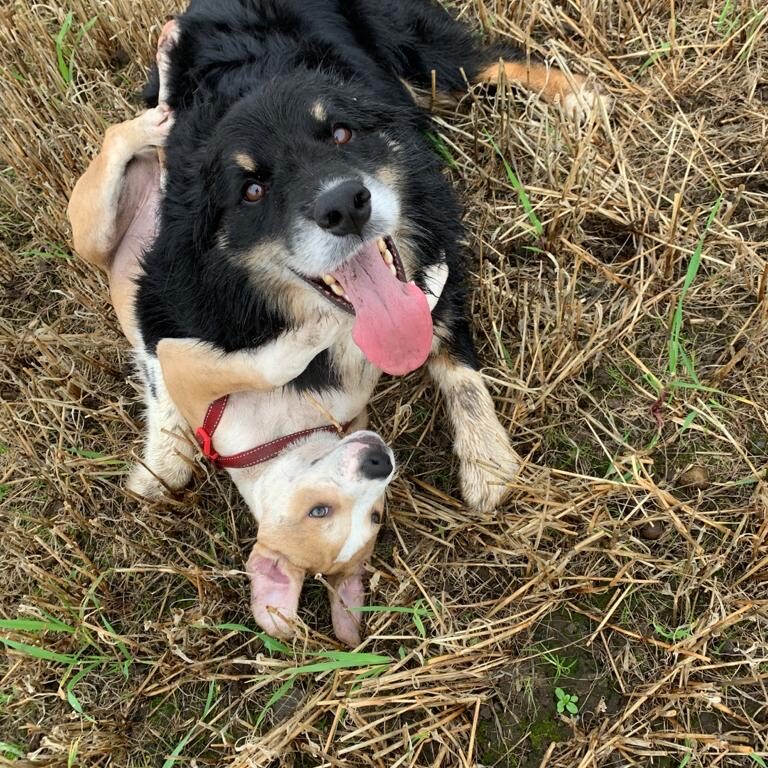
Training Tools
Training tools can help with the training process.
Clicker: A clicker is a small device that makes a clicking sound. It’s used to mark the behaviour and is followed by a reward. This helps your puppy understand what behaviour is being rewarded.
Treat Pouch: A treat pouch allows you to carry treats easily and access them quickly during training sessions.
Training Leash: A training leash gives you more control during walks and training sessions. Choose one that’s the right length and material for you.
Consistency and Patience
Training your puppy requires consistency and patience. Puppies are like sponges, they soak up everything around them. Be consistent with commands and rewards.
If you use different words or actions while training your puppy, they will get confused. Patience is also key. Puppies will make mistakes and it’s important to stay calm and positive. Training is a process that takes time and commitment.
Handling Common Issues
Common Issues
Every new puppy comes with issues. Addressing these early on will prevent long term problems.
Separation Anxiety
Separation anxiety is common in puppies and can lead to destructive behaviour if not addressed. Help your puppy get used to being alone by gradually increasing the time they spend in their crate or playpen while you’re out of sight.
Start with short periods and increase the time. Leave a piece of clothing with your scent in the crate or playpen. This will help comfort and reduce anxiety. Keep your departures and arrivals low key so you don’t create anxiety around these times. Don’t make a big deal when you leave or come home.
Some puppies may benefit from background noise, such as a radio or TV, when left alone. Also providing a special toy or treat that they only get when you leave can help create positive associations with your absence.
Chewing and Nipping
Chewing and nipping are natural behaviour for puppies but can be a problem if not managed. Provide plenty of chew toys to satisfy your puppy’s need to chew.
Rotate toys to keep things interesting. If your puppy starts to chew on something they shouldn’t be, redirect them to a chew toy and praise them when they choose the toy instead.
Teach your puppy a command such as “Leave it” or “Drop it” to stop unwanted chewing or nipping. Use positive reinforcement to reward compliance.
To prevent nipping, avoid rough play that encourages biting. If your puppy nips during play, make a high pitched yelp to mimic the sound a littermate would make and stop the play immediately. This teaches your puppy that nipping ends the fun.
Eve’s Rottweiler
Eve’s Rottweiler, dizzy had abit of a chewing phase. She seemed to want to chew on everything, from shoes to furniture. They invested in lots of chew toys and made sure to keep anything tempting out of her reach.
Whenever They caught her chewing on something she shouldn’t be, they would redirect her to a toy and praise her for chewing on it instead. Over time Dizzy learned what was acceptable to chew on and our house was safe from her strong teeth.
Health and Nutrition
A healthy puppy is a happy puppy. Nutrition and the odd vet visits are key.
Feeding Your Puppy
Choose high quality puppy food that meets all nutritional requirements. Stick to a routine feeding schedule. Consistency helps with digestion and potty training out of the crate.
Most puppies do well with three meals a day until they are about 6 months old then transition to two meals a day. Follow the feeding guidelines on the food packaging and adjust according to your puppy’s growth and activity level. Overfeeding can lead to obesity which can cause health problems.
When choosing food look for a formula that is specifically for puppies. These foods have the right balance of nutrients for your puppy’s growth and development.
Don’t give your puppy table scraps or human food as this can upset their stomach and lead to unhealthy eating habits.
Vet Visits
Vets can be expensive, but there are some essential visits to do for your puppy’s health. Keep to your puppy’s vaccination schedule to protect them from common diseases.
Your vet will provide a vaccination plan based on your puppy’s age and health. Optional regular vet checks ensure your puppy is growing healthy and can catch any issues early. Schedule visits every few weeks for the first 6 months and then annually.
During vet visits your veterinarian will check your puppy’s overall health, weight, teeth, ears and coat. They will also discuss preventative care such as flea and tick prevention, heartworm medication and dental care. These measures help keep your puppy healthy and happy.
Snippet loved exploring and strangely loved the vet. The vet was great and made the experience as stress free as possible. We discussed Snippets diet, vaccinations and overall care. The vet gave great advice on everything from feeding to training.
Enrichment and Play
Puppies need mental and physical stimulation to thrive. Playtime is key to their development.
Interactive Toys
Toys like puzzle feeders and stuffed Kongs challenge your puppy’s mind and keep them busy. Provide a variety of toys, including chew toys, plush toys and interactive toys.
Rotate them to keep your puppy interested. Puzzle feeders require your puppy to figure out how to get the food or treats inside. This stimulates their brain and provides mental exercise. Stuff a Kong toy with treats or peanut butter and freeze it. This is a long lasting treat that will keep your puppy occupied and soothe teething.
You may find this Blog I wrote based on our experience super useful!
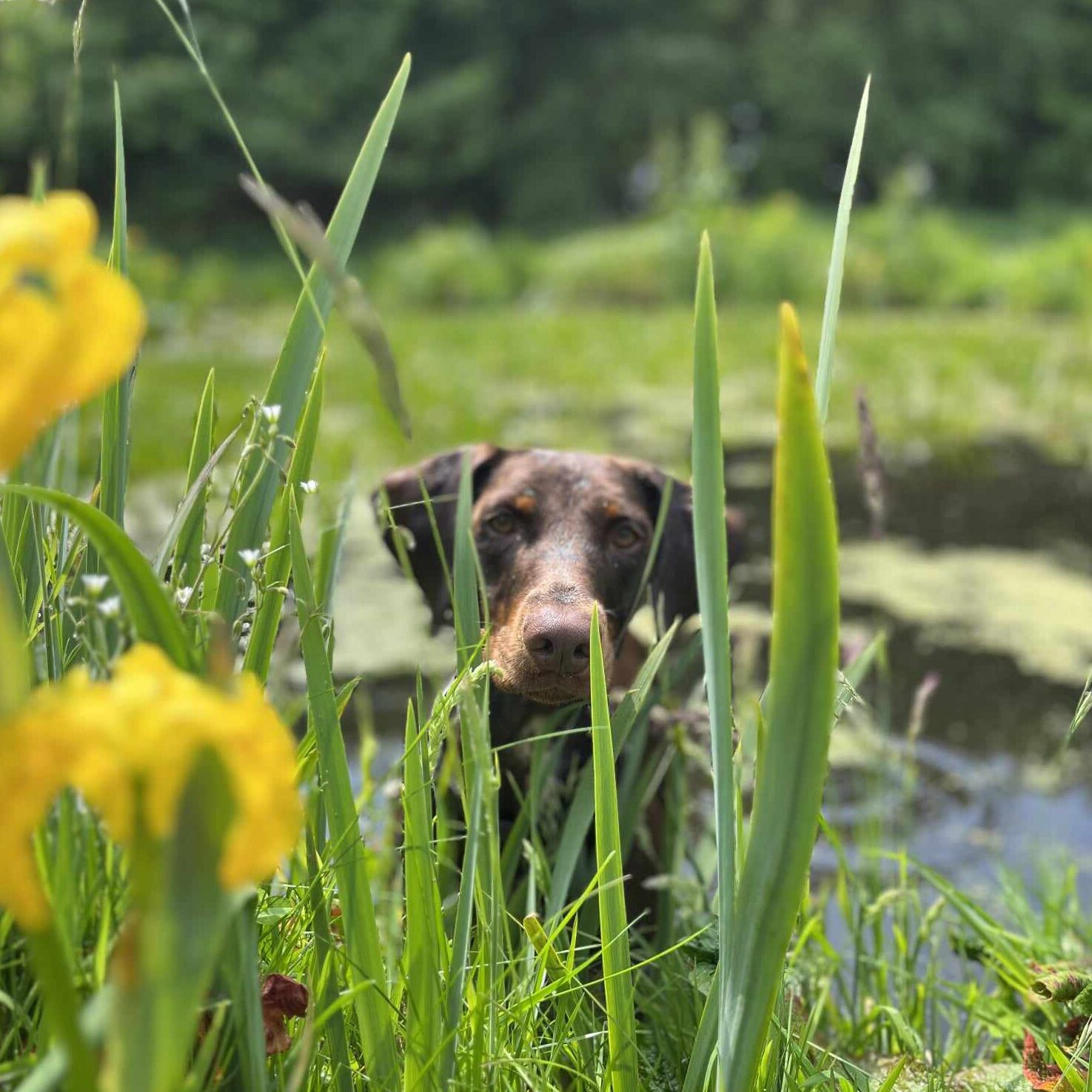
Exercise
Once your young puppy is fully vaccinated start with short walks and gradually increase the distance. Walking helps with socialisation and physical exercise.
Aim for at least two short walks a day and gradually increase the length as your puppy grows. Walking is physical exercise and socialisation.
Play throughout the day. Games like fetch, tug-of-war and hide-and-seek are great for bonding and exercise. Incorporate training into playtime. Games like “find it” (where your puppy has to find hidden treats) are mental and physical exercise.
Bonding
Bonding with your puppy is one of the best parts of being a pet owner. It takes time, patience and love.
Spend time each day playing, training and cuddling with your puppy. This builds trust and strengthens the bond. Do interactive play sessions with your puppy.
This can be fetch, tug-of-war or just rolling around on the floor together. Incorporate short training sessions into your daily routine. This teaches your puppy important commands and reinforces the bond. Spend quiet time cuddling and petting your puppy. Physical touch strengthens the bond and comforts your puppy.
Your Puppy
Learn to read your puppy’s body language. Understanding their cues helps you respond and bond.
Watch your puppy’s body language. Tail wagging, ear position and overall posture will give you clues about how your puppy is feeling. Different barks, whines and growls mean different things.
Learn to recognise these vocalisations and respond accordingly. Remember your puppy is learning and growing. Be patient and consistent in your training and interactions. Positive reinforcement is key to the bond.
Bringing Your Puppy Home to the Family
Bringing a young puppy home is more than just setting up their space. Introducing them to the family including other pets is part of their socialisation.
Meeting the Family
Introduce your puppy to family members one at a time in a calm and controlled environment. Let your puppy come to you and don’t overwhelm them with too many new faces at once.
Make the initial introduction positive and calm. No loud noises or sudden movements that will scare your puppy. Supervise interactions between your puppy and young children.
Teach children how to handle the puppy gently and respectfully. Make sure all family members are on the same page with rules and training methods. Consistency is key for your puppy’s learning.
Other Pets
When introducing your puppy to other pets do it gradually and under supervision. Keep initial interactions short and positive. Introduce your puppy to other pets in a neutral location such as a park or a friend’s garden.
This prevents territorial behaviour. Short supervised play sessions. Watch for signs of aggression or fear and intervene if necessary. Provide separate spaces for each pet to retreat and feel safe. Gradually increase the time they spend together as they get more comfortable.
Introducing a new puppy to an older dog can be tough. Older dogs can feel threatened or jealous of the new arrival. Be patient and give both dogs time to adjust. Supervise their interactions closely and reward calm, friendly behaviour.
Eve remembers introducing her new puppy Cooper to Dizzy. Dizzy was unsure of cooper and would growl if he got too close. We gradually let them spend more time together at home. We made sure to give Dizzy lots of attention and treats for calm behaviour. In the end they became best of friends and are inseparable.
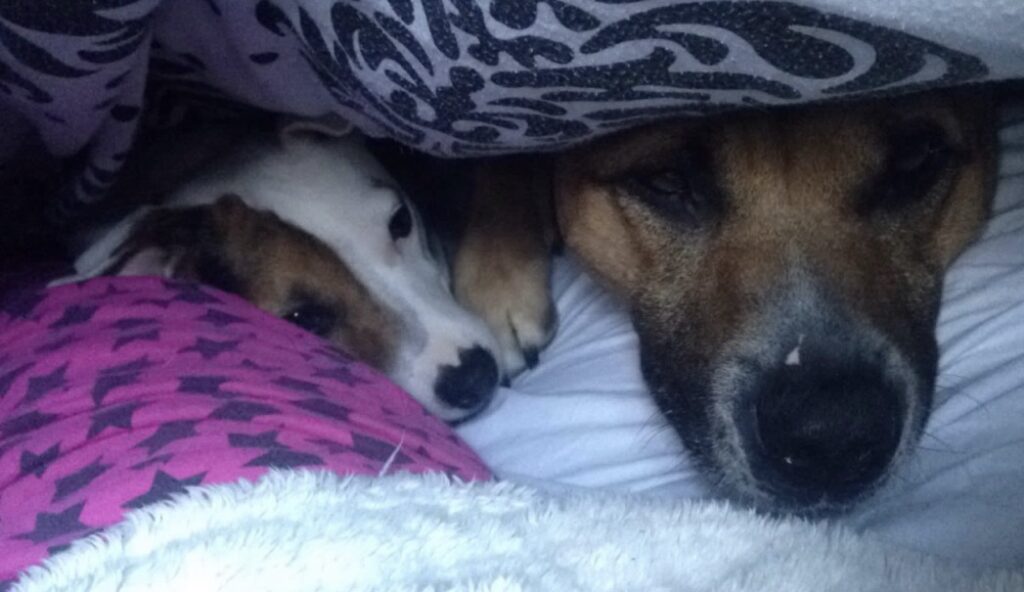
Puppy Schedule
Having a daily schedule for your puppy helps establish routines and structure. A consistent schedule helps with training and meets your puppy’s needs.
Daily Routine
A typical daily schedule for a young puppy might look like:
Morning: Wake up, potty breaks, breakfast, short play.
Mid-Morning: Potty break, training, nap time.
Afternoon: Potty break, lunch, longer play.
Evening: Potty break, dinner, play.
Night: Final potty break and bedtime routine.
Flexibility
While consistency is key, be flexible and adjust the schedule as needed to suit your puppy’s growth and changing needs. Listen to your puppy’s cues and adjust accordingly.
Having a schedule helps your puppy know what to expect for the day. It also helps you manage your time and make sure all your puppy’s needs are met.
As your puppy grows and becomes more independent you can adjust the schedule to suit their changing needs.
Travel and Outings with Your Puppy
Traveling with a puppy requires planning and preparation to make it safe and enjoyable.
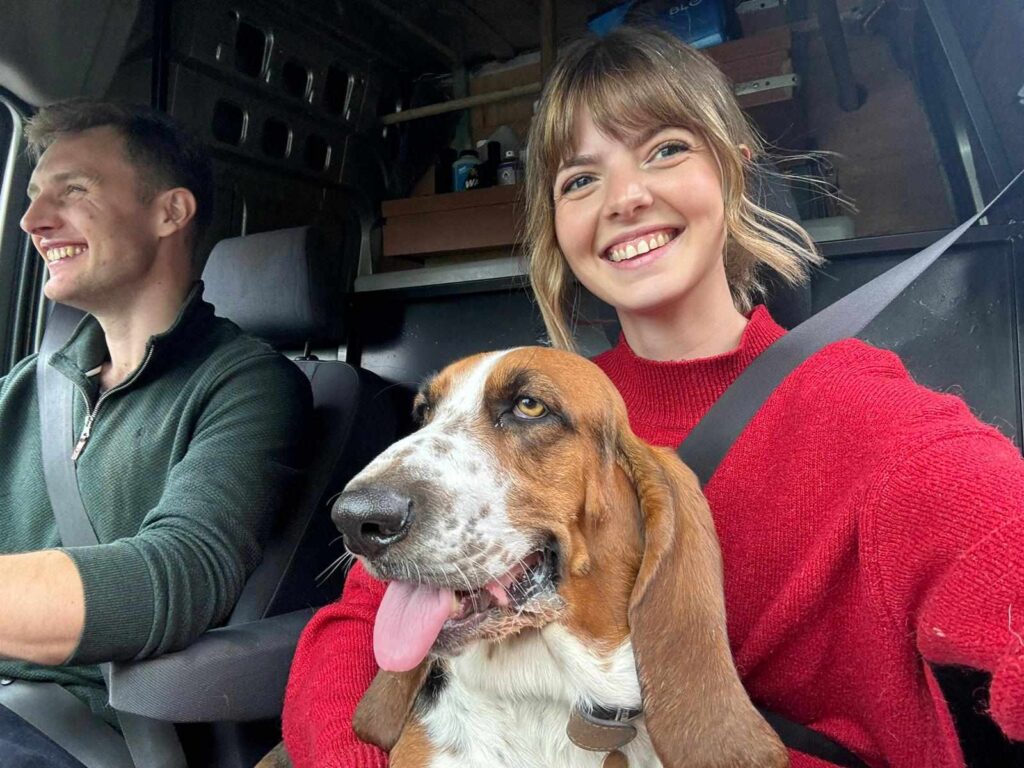
Car Travel
Use a crate or a travel harness to secure your puppy in the car. Never leave your puppy unattended in the car especially in hot weather.
Make sure your puppy is secured in a crate or with a travel harness to prevent injuries in case of sudden stops or accidents.
Bring essentials like water, food, toys and potty pads for longer trips. Plan for regular breaks to let your puppy stretch and potty. Keep the car environment calm. No loud music and no sudden movements that could startle your puppy.
For longer car trips pack everything your puppy might need including their regular food, water and some familiar toys for comfort. Plan for regular stops to let your puppy stretch, potty and have a drink. If your puppy gets car sick consult your vet for advice on how to manage it.
Public Places
When taking your puppy to public places make sure they are on a leash and have identification tags. Socialise your puppy gradually to new environments and people.
Start leash training in a familiar environment before venturing out. This will help your puppy get used to walking on a leash. Make sure your puppy has a collar with identification tags.
Consider microchipping your puppy for extra security. Gradually introduce your puppy to new environments and people. Reward calm and good behaviour with treats and praise.
Taking your puppy to new places is great for socialisation but go at their pace. Start with quieter, less busy places and gradually work up to busier environments.
Always watch your puppy’s body language and remove them from situations that are too stressful.
I remember the first time we took Snippet to the local beach. He was a bit overwhelmed at first by all the sights, sounds and smells. We kept the visit short and brought plenty of treats to reward him for good behaviour. Over time Snippet became more comfortable and now he starts wining with excitement when he knows we are approaching the beach.
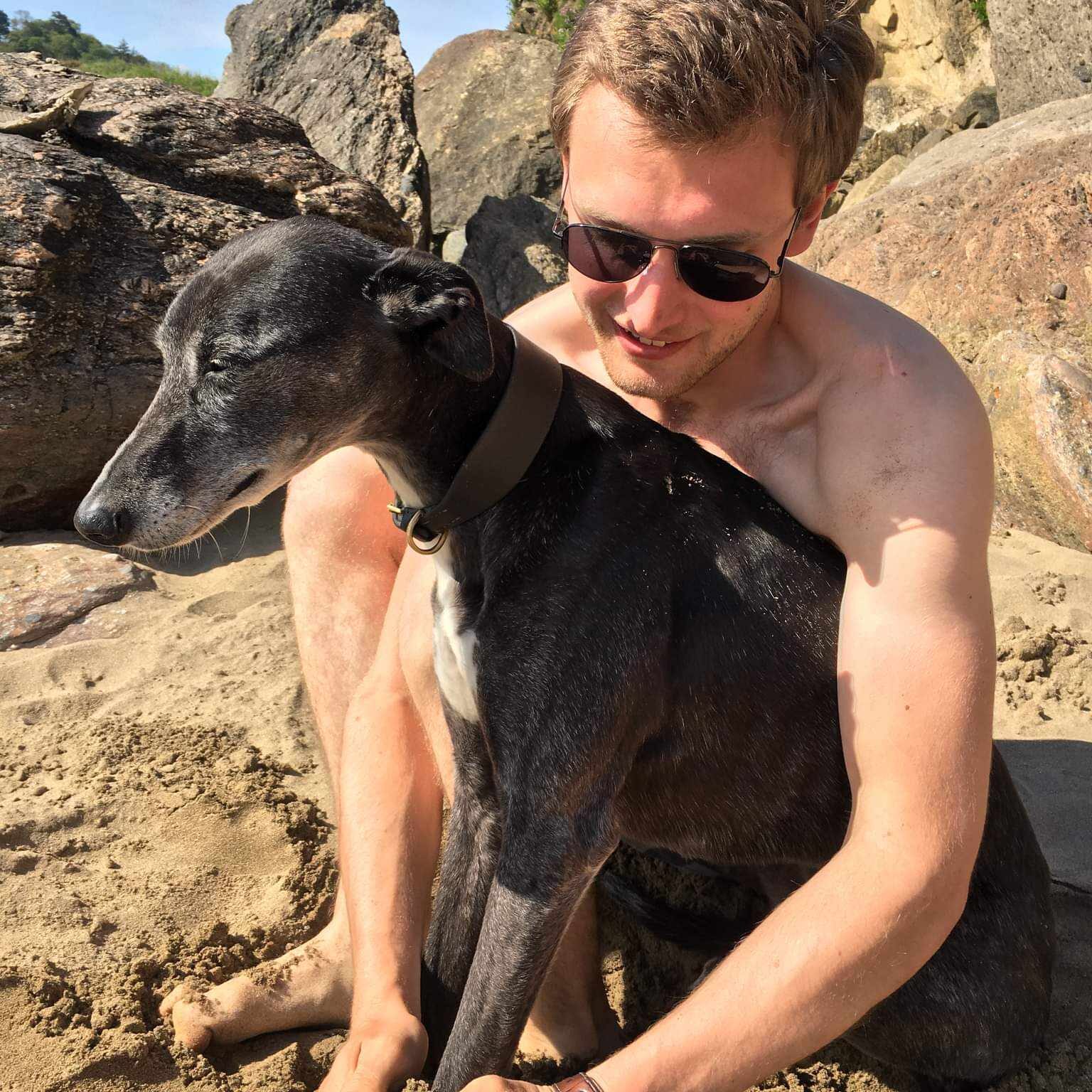
Puppy Training Classes
Enrol your puppy in training classes for professional guidance and socialisation.
Benefits of Training Classes
Training classes teach basic commands, socialisation skills and address common behavioural issues. They provide a structured environment for learning and bonding with your puppy. Training classes provide a structured environment for learning.
This consistency helps reinforce commands and behaviours. Classes offer your puppy to socialise with other dogs and people. This helps prevent fear and aggression. Professional trainers can advise on specific behavioural issues and training techniques.
Choosing a Trainer
Look for a certified trainer with good reviews and experience with puppies. Observe a class before enrolling to make sure the trainer’s methods match your training philosophy. Make sure the trainer is certified and has experience with puppies in a safe and controlled environment.
Look for good reviews and recommendations from other pet owners. Observe a class to see the trainer in action. Choose a trainer who uses positive reinforcement. Smaller class sizes means more individual attention. Consider the size of the class when choosing a trainer.
Training classes are a great resource for new puppy owners. They provide a structured environment for learning and socialisation and access to professional advice and support. When choosing a class look for one that uses positive reinforcement methods and has a good reputation.
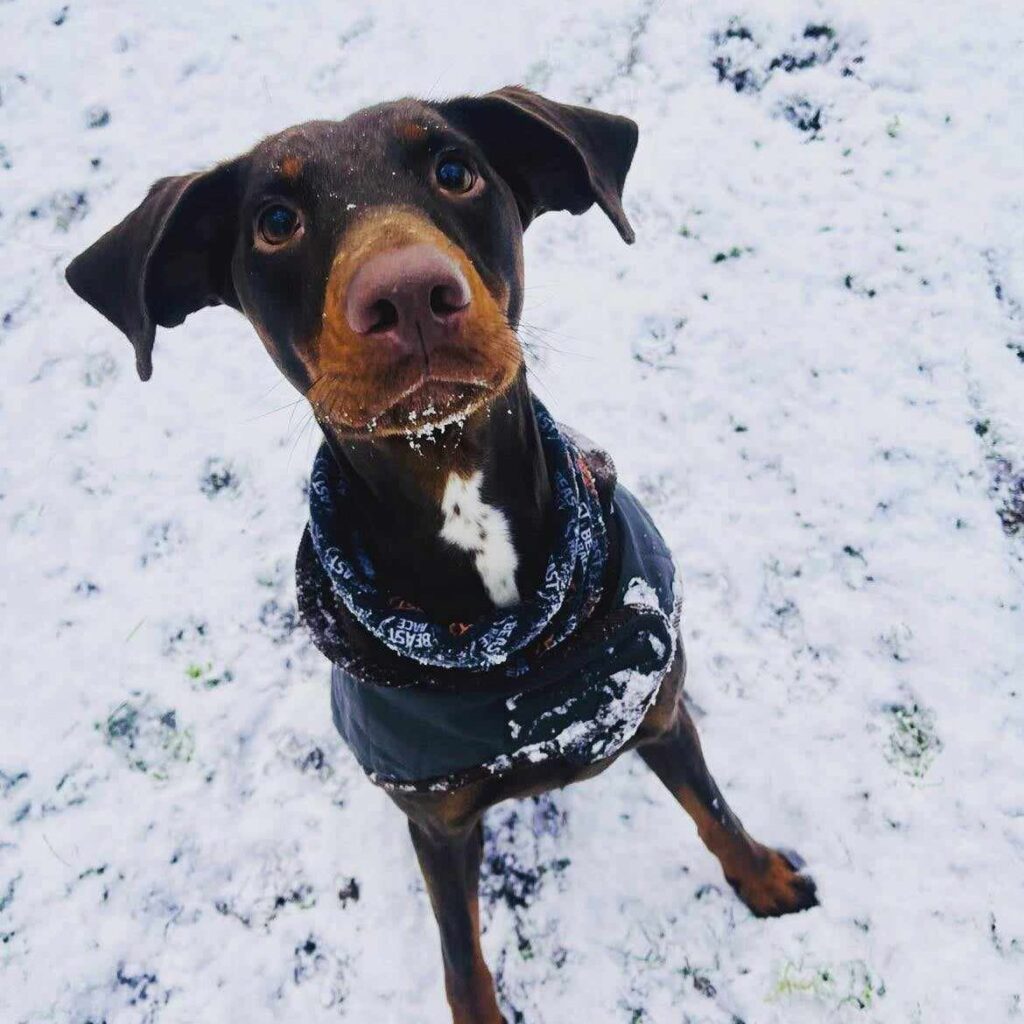
Continuing Education
Training doesn’t stop after the basics. Continuing to work on advanced commands and behaviours will help your puppy become a well mannered adult dog. Teach advanced commands such as heel, stay for longer periods and recall under distractions.
These commands will improve your dog’s behaviour and safety. Continue to expose your puppy to new environments, people and other dogs. Ongoing socialisation will prevent behavioural issues and ensure a well rounded dog. Introduce your dog to new experiences regularly.
This can be different surfaces, sounds and environments. Continue to use positive reinforcement to reward good behaviour and calm responses to new stimuli. Join group activities such as dog sports, obedience classes or community events to keep your dog socialised and mentally stimulated.
Advanced Commands
Teaching advanced commands will not only improve your dog’s behaviour but also provide mental stimulation. Commands like “heel” where your dog walks calmly beside you, “stay” for longer periods and “recall” under distractions are important for safety and control.
Practice these commands in different environments with varying levels of distractions to make sure your dog responds reliably.
Socialisation is an ongoing process. Continue to introduce your dog to new experiences, people and other dogs throughout their life.
Ongoing Socialisation
This will prevent behavioural issues and ensure your dog remains well adjusted and confident. Join group activities such as dog sports, obedience classes or community events to keep your dog socialised and mentally stimulated.
Behavioural Issues
Addressing behavioural issues early on is key to a peaceful home. Common behavioural issues are barking, jumping, digging and leash pulling.
Identify the cause of the behaviour and address it through training and environmental management. Determine the cause of the barking (e.g. boredom, anxiety, attention seeking) and address it.
Provide mental and physical stimulation and use training to redirect the behaviour. Teach your puppy to greet people calmly. Reward them for sitting or standing quietly and ignore jumping behaviour.
Provide a designated digging area and redirect your puppy to it. Make sure they are getting enough exercise and mental stimulation to reduce boredom related digging. Use positive reinforcement to teach your puppy to walk nicely on a leash.
Stop and wait when they pull and reward them when they walk calmly by your side.
Behavioural issues are common in puppies and can be managed with patience and consistency. Understanding the root of the behaviour is key to finding a solution. For example if your puppy is barking due to boredom, providing more mental and physical stimulation will help reduce the behaviour.
Professional Help
If you’re experiencing persistent behavioural issues seek help from a professional dog trainer or behaviourist. They can provide you with tailored solutions and support for your specific situation. A certified behaviourist can help with complex behavioural issues and provide a customised training plan.
Consider regular sessions with a trainer or behaviourist to monitor progress and adjust the training plan as needed. Use books, online courses and community forums to continue learning about dog behaviour and training techniques.
Sometimes behavioural issues need professional help. A certified dog trainer or behaviourist can provide a customised training plan and ongoing support. They can also help identify and address any underlying issues that may be contributing to the behaviour.
Milestones
Celebrate your puppy’s achievements and milestones to reinforce good behaviour and strengthen your bond.
Milestones to Celebrate
Celebrate with praise and a treat when your puppy goes potty outside. Reward with a favourite toy or extra playtime when they learn a new command. Introduce new experiences gradually and celebrate their progress.
Traditions
Create traditions such as a special treat on adoption anniversaries or a new toy on birthdays. These celebrations create lasting memories.
Celebrate your puppy’s adoption anniversary with a special outing or a new toy. Mark your puppy’s birthday with a special treat, a new toy or a fun activity. Include your puppy in holiday celebrations with pet friendly activities and treats.
Celebrating your puppy’s milestones helps reinforce good behaviour and creates lasting memories. Whether it’s their first successful toilet outside or mastering a new command, take the time to celebrate their achievements. Create traditions that include your puppy in family celebrations such as adoption anniversaries or holidays.
I remember the first time our Lurcher, Snippet came when called. It was a big deal for us and we celebrated with a special treat and lots of praise. These moments not only reinforce good behaviour but also strengthen the bond between you and your puppy.
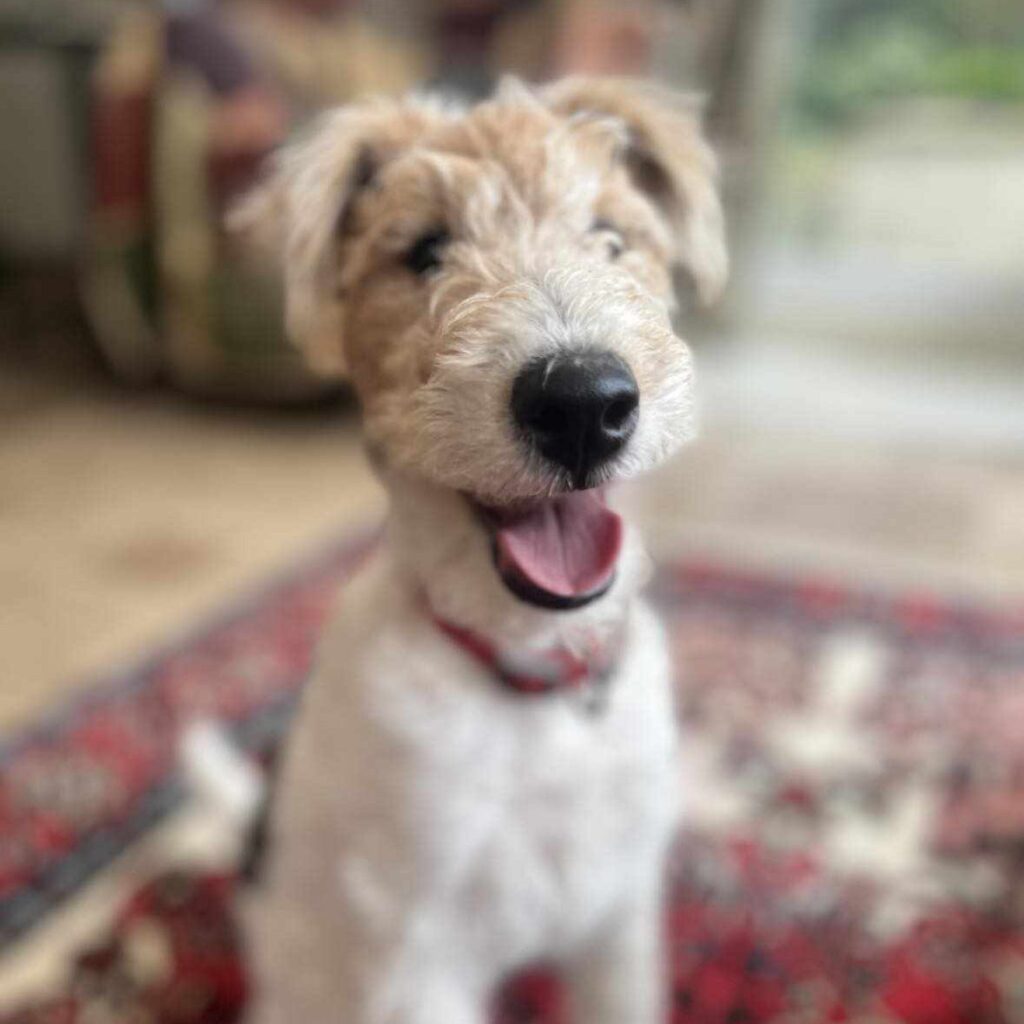
Conclusion
Bringing a new puppy into your home is an adventure filled with fun and challenges. By preparing your home, investing in proper training and nurturing your bond you’ll create a safe and loving environment for your new fur baby. Enjoy the puppy journey and you’ll find the effort you put in now will pay off with a well behaved and happy dog for years to come.
Final Tips and Resources
Here are some Blogs i have written, related to this subject!
Here are a few more tips and resources to help you out:
Stay Informed: Continue to learn about puppy care and training. There are many books, online courses and community forums to help you.
Join a Community: Connect with other puppy owners at local dog parks, training classes or online communities. Sharing is caring.
Be Patient: Training takes time. Be patient with your puppy and yourself. Celebrate the small wins and learn from the losses.
Enjoy the Ride: Puppyhood is a once in a lifetime experience. Enjoy the journey and the time you spend with your new fur baby.
Thanks for choosing to read our Blog. With preparation, patience and love you’re off to a great start to a happy and harmonious home for your new family member.

